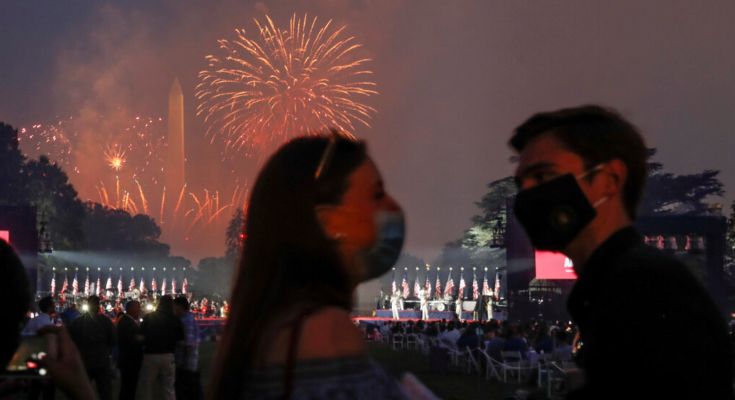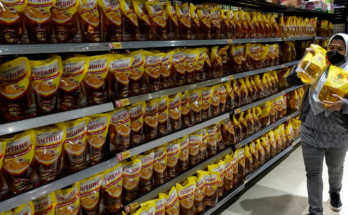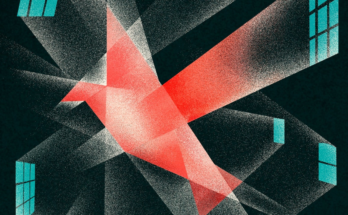
A year ago, the United States celebrated Independence Day largely by staying home. The country staggered into that Fourth of July holiday weekend, having set records for new coronavirus cases in six out of the nine previous days.
About 600 people were dying with the virus each day. On July 2, the country set what was then a record: 53,000 new reported cases. Governors were forced to slow their reopening plans — and in the months that followed, the pandemic grew much, much worse.
This year, reports of new cases are holding steady at 12,000 a day, the lowest since testing became widely available. The U.S. average of fewer than 300 daily deaths from Covid-19 is a decline of 23 percent over the past two weeks. Hospitalizations are also dropping.
Riding a wave of optimism, Americans are eagerly returning to their Fourth of July rituals, flocking to the roads and to the skies in the stiffest test yet for the nation’s travel infrastructure since the pandemic shut the nation down in March 2020.
About 48 million Americans are expected to travel over July 1 to 5, a 40 percent jump over last year, according to AAA, the automobile owners group. Of those, a record 43.6 million are predicted to travel by car, an 8 percent increase compared with 2019.
Another 3.5 million people are expected to fly, representing a 164 percent increase from 2020. United Airlines says that more than two million passengers have booked flights between July 1 and 6, five times the number that flew during the same weekend last year. (The airline announced this week that it would place the largest order for airplanes in its history, underscoring the bullish outlook for domestic travel.)
Ridership on Amtrak is at about 55 percent of prepandemic levels, the highest level so far this year. For the Fourth of July weekend, it’s at 80 percent of what it was over the 2019 holiday, Jason Abrams, a spokesman, said.
“Travel is in full swing this summer, as Americans eagerly pursue travel opportunities they’ve deferred for the last year-and-a-half,” said Paula Twidale, senior vice president at AAA Travel. “We saw strong demand for travel around Memorial Day and the kickoff of summer, and all indications now point to a busy Independence Day.”
Still, a precipitous drop in U.S. coronavirus cases through the spring has leveled off. About 100 million people in the country have yet to receive a single vaccine shot, and the supply of vaccines far outstrips the demand.
The spread of the Delta variant remains worrisome for the unvaccinated, and there are 1,000 counties in the country where fewer than 30 percent of residents are inoculated, said Rochelle Walensky, director of the Centers for Disease Control and Prevention.
The White House plans to host 1,000 essential workers and military families on the South Lawn on Sunday, the largest gathering of President Biden’s tenure. The celebratory display is meant to signal that the president has delivered on his promise that Americans would return to some semblance of normal life by the holiday.
“This weekend, millions of Americans will be able to get together — back together, not just with their families and close friends for small backyard cookouts, but with their community for larger festivals, parades and fireworks, celebrating our country’s July 4th Independence Day and the progress we have made against the virus together,” the White House coronavirus coordinator, Jeff Zients, said on Thursday.
While the country has fallen short of Mr. Biden’s goal of getting shots to at least 70 percent of adults by July 4, the White House has put a positive spin on the numbers. Mr. Zients noted last week that 70 percent of Americans age 30 and up have received at least one shot.
Public health officials have been struggling to motivate the vaccine holdouts. A few airlines and airports are taking up the charge, trying to entice people to get the shots with sweepstakes. (The Transportation Safety Administration still requires masks in airports, on airplanes and on trains.)
While Americans are traveling again, many local officials are taking a cautious approach. Though New York City plans to revive its huge Macy’s fireworks show, some large celebrations, parades and fireworks extravaganzas have been pared back or canceled.
A few places, like Glencoe, Ill., have postponed their fireworks shows until Labor Day, though neighbors and community groups will be allowed to parade through the village’s downtown once again.

In the United States, a weekend of barbecues and Independence Day parades means that there will be many children under 12, who are sill not eligible to be vaccinated, mixing with people of all ages who may or may not be fully vaccinated.
Since the highly transmissible Delta variant is spreading, and only full vaccination offers significant protection from it, here is some basic advice for parents on how to navigate public areas with unvaccinated children, from The Morning Newsletter.
But first, some perspective. In England, where Delta is already widespread, Covid-related hospitalizations of children have risen from their lows of a few weeks ago, but the increases are not large. So the best assumption seems to be that Delta will be modestly worse for children than earlier versions of the virus. “I haven’t seen data to make me particularly worried about Delta in kids,” Jennifer Nuzzo, a Johns Hopkins epidemiologist, said.
And Dr. Robert Wachter of the University of California, San Francisco, said this of the coronavirus and children: “The actual overall threat of death is minuscule, and the threat to health is quite low, but if I had young kids, I’d still really prefer they not get Covid.”
Unvaccinated children, like adults who are not fully vaccinated, should wear masks indoors and avoiding crowded places.
Take special care in areas are those with the lowest vaccination rates, which tend to be in the Southeast and the Mountain West. “If I were living in a place where cases were rising, I’d be more worried that my children could contract Covid,” said Jennifer Nuzzo, a Johns Hopkins epidemiologist.
The biggest risk to your child’s health today almost certainly is not Covid. It’s more likely to be an activity that you have long decided is acceptable — like swimming, riding a bicycle or traveling in a car. So exercise caution.

LONDON — A week from now, more than 60,000 soccer fans will pack Wembley Stadium in London for the European Championship final. British travelers with two vaccine shots will soon be welcomed back to Germany, which had banned them. And Prime Minister Boris Johnson said he was on track to lift most remaining coronavirus restrictions on July 19 — or, as the British press has dubbed it, “Freedom Day.”
All this in a country that, despite have a population that is almost 50 percent fully vaccinated, reported 27,125 new cases of the virus on Friday, a 52 percent jump from just a week earlier.
Britain’s determination to reopen amid that steep rise in cases amounts to a bold experiment, one that will be closely watched in the United States and across Europe: Can a country with a largely vaccinated adult population learn to live with the coronavirus?
“The world is watching the U.K. to see what living with Covid and high vaccine uptake looks like,” said Devi Sridhar, head of the global public health program at the University of Edinburgh. “The next few weeks will reveal if they’ve gambled correctly, or we end up having another wave of high hospitalizations.”
Britain has gone from one of the longest stretches under lockdown of any advanced economy to one of the swiftest vaccine rollouts and now, to a reopening. Scientists say it is time to test whether the nation can reach a coveted goal: population immunity through inoculation rather than infection.
There are some promising early signs. Britain’s recent rise in cases, most of which are also attributed to the highly transmissible Delta variant, has yet to be followed by a commensurate rise in hospital admissions or deaths.
That could be because of more testing or a greater number of cases among younger, unvaccinated people. But some scientists say it also suggests that the widespread deployment of vaccines — particularly among the most vulnerable populations — has weakened the link between infection and serious illness.

The highly contagious Delta variant has gained ground in New York City in recent weeks, though overall case counts remain low, according to a recent analysis by the city’s Health Department.
Since mid-June, there has been a steady daily average of about 200 new Covid-19 cases detected in New York City, the lowest since the early days of the pandemic and an indication that there is relatively little virus circulating there.
“The stability in terms of the daily numbers of cases is quite reassuring,” said Dr. Wafaa El-Sadr, an epidemiology professor at Columbia University’s Mailman School of Public Health.
The city’s daily Covid deaths are usually in the single digits now, and the number of new hospitalizations has been relatively steady for a couple of weeks — about 171 Covid patients were in area hospitals at the start of July.
In England, where the Delta variant now accounts for most cases, epidemiological data released on Thursday showed that it was not driving any surge in the rate of hospitalizations.
Dr. Torian Easterling, the first deputy commissioner of the New York City Department of Health and Mental Hygiene, said that “young adults” made up most of the new cases involving the Delta variant.
For now, Delta’s growing presence has not prompted any dramatic shifts in Covid-19 guidance from City Hall, and more and more people are shedding their masks.
The variant was first identified in India and is now causing a new surge of cases in many places around the world, including a handful of places in the United States. It was detected in New York in March. At that point, the city’s vaccination campaign was gaining momentum, but the long second wave that began last fall had yet to recede. Research shows that a full regimen of the vaccines in use in New York offer a high degree of protection against the Delta variant.
By the end of May, the city’s genome sequencing program suggested that the Delta variant made up about 8 percent of overall new cases in the city, even as case counts were plummeting. New data released on Thursday, based on genome sequencing of just 54 case samples, suggested that by mid-June, Delta could have accounted for 44.4 percent of new cases. (The data is reflected in a chart near the bottom of this page on the Department of Health’s website.)
The city’s sequencing program has been robust in recent months, with more than 10 percent of confirmed cases tested for variants in some weeks. The latest sample of cases to be sequenced was unusually small, involving only about 5 percent of confirmed cases.
Public health experts have said Delta’s gains should motivate New Yorkers to get vaccinated. About 49 percent of the city’s population has not been fully vaccinated — about four million people, including children not yet eligible.
And vaccination rates are uneven across the city, leaving pockets at risk. Vaccinations are lagging generally among Black New Yorkers, and, geographically, in northern Manhattan, the Bronx, and parts of Brooklyn and Queens.
“We need to always emphasize the fact that even though the percentage of Delta cases is going up, the total number of people getting Covid continues to go down and the vaccines continue to be very effective,” Dr. Jay Varma, a senior adviser for public health to Mayor Bill de Blasio, said at a news conference earlier this week.

State officials in Missouri, where vaccination rates are relatively low and the highly contagious Delta variant is more prevalent than in other states, asked the White House for help on Thursday in coping with a surge in coronavirus cases and deaths.
The state reached out to the Biden Administration only hours after the White House announced that it was creating “surge response teams” to help states contain outbreaks fueled by the new variant and low inoculation rates.
In the past two weeks, the daily number of reported cases in Missouri has more than doubled, and hospitalizations have increased 20 percent, though the figures remain a fraction of their November peak, according to a New York Times database.
The spike has been especially pronounced in the southwestern part of the state, which is home to tourist destinations like Branson and the Lake of the Ozarks, and where several hospitals recently had to move about a dozen Covid patients to other facilities because of staffing and capacity issues. C.D.C. estimates based on genomic testing put the prevalence of Delta cases in the state at nearly 30 percent.
“It is obvious this increase in cases has to do with increasing presence of the Delta variant,” Dr. George Turabelidze, Missouri’s state epidemiologist, told St. Louis Public Radio in an interview broadcast on Friday.
On Thursday, Jeffrey D. Zients, the Biden administration’s Covid-19 response coordinator, told reporters that the White House was assembling teams to help states confront outbreaks fueled by the Delta variant, tapping a mix of federal resources and personnel.
“These are dedicated teams working with communities at higher risk for or already experiencing outbreaks, due to the spread of the Delta variant and their low vaccination rate,” Mr. Zients said.
He said the effort would involve sending federal staff to local health departments that need help with vaccination and testing, and dispatching experts from the Centers for Disease Control and Prevention who can help with data analysis and field investigations. Those actions would be accompanied by a focus on testing and monoclonal antibody treatments, and expanded paid media campaigns to encourage people to get vaccinated.
Missouri’s rise in reported infections and hospitalizations highlights the growing concern among public health officials that regions with large populations of unvaccinated people could see case surges.
Full vaccination with the two-dose regimen of vaccines made by Pfizer-BioNTech and Moderna has been shown to provide a high degree of protection against Delta, and Johnson & Johnson said on Thursday that early results from its trials showed that its one-dose vaccine also offered major protection.
But many people in Missouri will not have that protection: Federal data show that about 61 percent of the population there has not been fully vaccinated, a larger proportion than in many states.
“There are several counties in Missouri that are continuing to experience an increase in Covid-19 activity,” Lisa Cox, a spokeswoman for Missouri’s health department, wrote in an email. “Most of this increased viral activity can be attributed to low vaccine uptake in certain areas.”
Public health experts have said that sending vaccines to states with outbreaks does little to stanch the spread of the virus, since it takes as many as six weeks for someone to acquire full protection from a shot. Testing and contact tracing can be a more effective and immediate response.
The C.D.C. deployed specialized teams earlier in the year to states facing outbreaks, including Michigan, which battled a surge of cases of the Alpha variant this spring. In Mesa County, Colorado, a C.D.C. team has been providing “technical support” to local health officials dealing with a rise in Delta cases.Ms. Cox, from Missouri’s health department, said that details were still being worked out but that the C.D.C. team would probably help with contact tracing and outreach to areas with low rates of vaccination.

WASHINGTON — Federal regulators on Friday cleared a batch of vaccine that could furnish up to 15 million doses of Johnson & Johnson’s one-shot coronavirus vaccine, deciding they can be safely distributed despite production failures at the vaccine-making factory that ruined 75 million other doses.
The move brings the total number of Johnson & Johnson doses made at the Baltimore facility and cleared by the Food and Drug Administration for distribution in the United States to roughly 40 million. But Johnson & Johnson remains far from its goal of delivering 100 million doses to the federal government by the end of June. European Union officials have said the firm is missing its delivery targets there, as well.
The vaccine cleared on Friday is not yet bottled, and the Biden administration’s plans for it remain unclear. But with the pandemic abating and the country awash in vaccines from the two other authorized manufacturers, any new Johnson & Johnson doses produced in the United States are likely destined mostly for export.
Johnson & Johnson has been unable to produce much vaccine since regulators shut down the Baltimore factory, operated by Emergent BioSolutions, nearly three months ago because of major production errors. Johnson & Johnson had been relying on Emergent, its subcontractor, to produce vaccine for use in the United States as well as to meet its commitments overseas while expanding its own plant in Leiden, the Netherlands.
Even with the newly cleared batch, Johnson & Johnson remains nearly 40 million doses short of its 100-million-dose pledge for U.S. use. The F.D.A. did not disclose the precise number of doses cleared Friday, but multiple people familiar with Emergent’s operation said the batch amounted to as many as 15 million doses.
Also on Friday, European regulators approved the scale-up of Johnson & Johnson’s Dutch plant, a piece of good news for the firm amid its supply woes. “Today’s approval represents progress in expanding our global manufacturing network to supply our Covid-19 vaccine worldwide,” the company said in a statement.
And on Thursday, Johnson & Johnson reported that early results of unpublished studies showed that its vaccine is effective against the highly contagious Delta variant, even eight months after inoculation. That was a reassuring finding for those who have gotten the company’s shot.
The Baltimore factory is expected to remain shuttered for several more weeks while Emergent tries to bring it up to standard, according to people familiar with its operation who spoke on condition of anonymity. The F.D.A. said in a statement Friday that it was not yet ready to certify that the plant was following good manufacturing practices.

SYDNEY, Australia — Three days after the emergence of a rare Covid case in Sydney, around 40 friends gathered for a birthday party. Along with cake and laughter, there was a hidden threat: One of the guests had unknowingly crossed paths with that single Covid case.
Two weeks later, 27 people from the party have tested positive, along with 14 close contacts. And the seven people at the gathering who were not infected? They were all vaccinated.
For Australia and every other nation pursuing a so-called “Covid zero” approach, including China and New Zealand, the gathering in western Sydney amounts to a warning: Absent blanket vaccinations, the fortress cannot hold without ever more painful restrictions.
The Delta mutation has already raced from Sydney across Australia. Half of the country’s 25 million people have been ordered to stay home as the caseload, now at around 200, grows every day. State borders are closed, and exasperation is intensifying.
It’s a sudden turn in a country that has spent most of the past year celebrating a remarkable achievement. With closed borders, widespread testing and efficient tracing, Australia has quashed every previous outbreak, even as almost every other country has lived with the virus’s unceasing presence, often catastrophically.
In Australia, no one has died from Covid-19 in all of 2021. While New York and London sheltered last year from a viral onslaught, Sydney and most of the country enjoyed full stadiums, restaurants, classrooms and theaters with “Hamilton.”
That experience of normalcy — diminished only by a lack of overseas travel, occasional mask mandates and snap lockdowns — is what Australian politicians are so desperate to defend. To them, keeping Covid out, whatever it takes, remains a winning policy.
On Friday, Australia doubled down on this approach, announcing that the trickle of a few thousand international arrivals allowed each week (and quarantined) would be cut by half.
In case you missed it

Anxiety over the highly contagious Delta variant, which has been rapidly outpacing other versions of the coronavirus as it spreads around the world, led several countries to return to a defensive stance on the pandemic this week.
Portugal reimposed a nighttime curfew. Indonesia announced new restrictions ordering places of worship closed and nonessential workers to stay home in parts of Java and Bali islands. And Australia, which had come close to an ambitious “Covid zero” target in recent months, has ordered lockdowns in several cities after outbreaks.
Even Israel, where the vaccination rate is among the highest in the world, is seeing new pockets of infections linked to the Delta variant, which scientists believe may be twice as transmissible as the original version of the coronavirus. Genome sequencing in the United States and elsewhere strongly suggests that Delta — which now accounts for one-quarter of U.S. cases — is poised to become the dominant version in many parts of the world over the coming months.
As concern about the variant grows, the World Health Organization split with the Centers for Disease Control and Prevention on Monday in urging even vaccinated people to continue wearing masks to help stem the virus’s spread.
Most vaccines seem to hold up against the Delta variant, including the one produced by Johnson & Johnson, which shared research this week indicating that its one-dose shot was effective against the variant, a boost for health officials trying to contain its spread in communities with lower vaccine access.
But headed into the July 4 weekend, the pace of vaccination in the United States has slowed significantly from its April peak, and the White House has acknowledged that the country will not meet President Biden’s goal of having 70 percent of adults at least partly vaccinated by the holiday.
Here’s what else happened this week:
In a 5-to-4 decision, the Supreme Court refused to lift a moratorium on evictions that the C.D.C. had kept in place since last year. The moratorium had been scheduled to expire at the end of July, and the court’s decision could cost the nation’s landlords up to $200 billion in unpaid rent, according to an emergency application filed with the court by landlords, real estate companies and trade associations.
A report published in the journal Nature Medicine found that the pandemic has reversed a steady rise in life expectancy in Brazil, which has seen an estimated decline of 1.3 years in 2020 and an even steeper drop so far this year. As of Friday, the country had reported more than 520,000 deaths from the virus.
North Korea’s leader, Kim Jong-un, said that missteps in the country’s public health efforts had caused a “great crisis,” with significant national security implications. It was unclear whether the statement amounted to an admission of a serious outbreak, as the country officially maintains that it has no active cases. But experts said that the acknowledgment could pave the way for North Korea to accept international assistance to fight the virus crisis, including vaccines.



